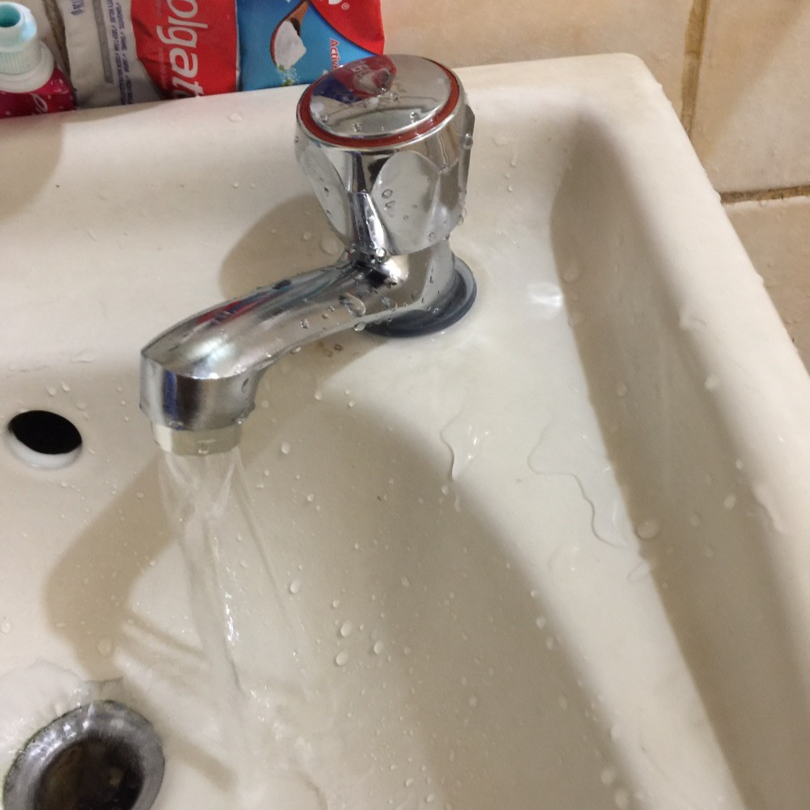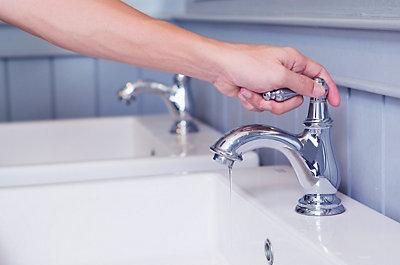How It's Essential to Rectify a Leaking Faucet
How It's Essential to Rectify a Leaking Faucet
Blog Article
We've unearthed this post about What Causes Leaky Faucets & How To Fix Them down the page on the net and thought it made perfect sense to relate it with you on my blog.

Leaking faucets may appear like a small aggravation, however their impact goes beyond just the annoyance of the audio. From drainage to incurring unneeded monetary prices and health dangers, neglecting a dripping faucet can bring about different effects. In this article, we'll delve into why it's crucial to resolve this usual home concern without delay and properly.
Wastefulness of Water
Ecological Influence
Trickling taps add dramatically to water wastefulness. According to the Epa (EPA), a single tap dripping at one drip per secondly can squander greater than 3,000 gallons of water each year. This not just stress water sources however likewise impacts ecological communities and wild animals depending on them.
Step-by-Step Overview to Repairing a Dripping Tap
Devices Called for
Prior to trying to fix a trickling tap, gather the essential tools, including a flexible wrench, screwdrivers, replacement parts (such as washing machines or cartridges), and plumber's tape.
Typical Faucet Issues and Their Solutions
Identify the type of tap and the details issue creating the drip. Typical problems include damaged washers, corroded valve seats, or defective O-rings. Describe supplier instructions or online tutorials for step-by-step assistance on repair work.
Financial Expenses
Boosted Water Expenses
Beyond the environmental impact, leaking taps can blow up water bills significantly. The gathered wastage with time converts right into greater energy costs, which could have been prevented with prompt fixings.
Potential Residential Or Commercial Property Damage
In addition, prolonged dripping can result in damage to components and surface areas surrounding the tap. Water buildup can create discoloration, deterioration, and even structural problems if left unattended, causing additional repair work costs.
Health and wellness Worries
Mold and Mildew Growth
The consistent presence of dampness from a leaking tap produces an optimal environment for mold and mildew and mold development. These fungi not only endanger indoor air high quality yet additionally pose wellness dangers, especially for people with respiratory system problems or allergic reactions.
Waterborne Conditions
Stationary water in dripping taps can end up being a breeding ground for microorganisms and various other virus, raising the danger of waterborne conditions. Pollutants such as Legionella germs grow in stagnant water, possibly bring about significant diseases when ingested or breathed in.
DIY vs. Professional Repair
Benefits and drawbacks of DIY Fixing
While some may attempt to deal with a leaking faucet themselves, do it yourself fixings come with their own collection of obstacles. Without correct understanding and devices, DIY efforts can aggravate the issue or cause insufficient fixings, lengthening the trouble.
Benefits of Employing a Professional Plumber
Employing a professional plumber makes certain that the underlying reason for the dripping tap is dealt with effectively. Plumbers have the proficiency and equipment to detect and repair tap problems successfully, conserving time and decreasing the threat of additional damage.
Ecological Duty
Individual Payment to Conservation
Taking obligation for taking care of dripping faucets aligns with wider efforts toward water preservation and environmental sustainability. Every individual's activities jointly make a significant influence on protecting valuable sources.
Sustainable Living Practices
By prioritizing timely repair services and taking on water-saving routines, people contribute to sustainable living techniques that profit both present and future generations.
Safety nets
Normal Maintenance Tips
To prevent leaking taps, perform routine maintenance such as cleaning up aerators, inspecting for leakages, and replacing worn-out parts without delay. Additionally, consider setting up water-saving gadgets or upgrading to a lot more effective components.
Importance of Prompt Services
Addressing leaking faucets as quickly as they're observed prevents additional water wastefulness and possible damage, inevitably saving both water and cash over time.
Impact on Residential Or Commercial Property Value
Understanding of Well-Maintained Home
Keeping a residential or commercial property in good condition, consisting of attending to maintenance problems like dripping faucets, boosts its regarded worth and desirability amongst potential customers or renters.
Influence on Resale Worth
Characteristics with well-kept plumbing fixtures, consisting of taps, command greater resale worths in the realty market. Addressing leaking taps can contribute to a positive perception throughout property evaluations and negotiations.
Verdict
Resolving a trickling faucet surpasses mere benefit; it's a crucial action towards preserving water, lowering financial expenses, and protecting health and wellness and property. Whether with DIY repairs or expert support, taking action to deal with trickling taps is a small yet impactful way to promote accountable stewardship of resources and add to a much healthier, extra sustainable future.
How to Fix a Dripping or Leaky Faucet
A leaking faucet is one of the most common problems that homeowners encounter, but it being commonplace doesn’t make it any less annoying. The constant drip drip drip of a leaking bathtub faucet, showerhead, or sink tap can disturb your home’s serenity. Left neglected, a dripping faucet can also result in higher water bills and discoloration or mold growth in your sink or plumbing fixtures.
Fortunately, you don’t have to be a trained plumber to know how to stop a dripping faucet. With some basic tools, replacement parts, and a little patience, leaky faucet repair is a breeze. In this article, we’ll explain what causes dripping faucets and how you can fix them.
What Causes a Leaking Faucet?
Kitchen and bathroom faucets come in all manner of designs, but most involve some combination of valves, O-rings, seals, and washers. The O-ring is usually the weakest link, but any one of these pieces can wear down over time. Heat, moisture, temperature fluctuations, minerals, mold, and movement can contribute to warping and corrosion, breaking the watertight seal. This just comes with the territory of being a homeowner. Everything is always subject to wear and tear, and some component parts of your appliances and fixtures need to be replaced on occasion. At least replacement O-rings are cheap!
More rarely, dripping faucets can be a symptom of excessively high water pressure. Were this the case in your home, you would probably notice that the leak is not isolated to one faucet. Water pressure issues are harder to resolve on your own. We recommend contacting a professional plumber if you suspect your water pressure is too high.
How to Fix a Dripping Faucet
Pipe wrench or monkey wrench Allen wrench set Screwdrivers Old towel or rag Shut off the water.
Before you do anything, you need to turn off the water to keep from drenching your kitchen or bathroom. You should find a valve under the sink and against the wall. Once you’ve turned this valve, try turning the faucet on to confirm that the water source has been cut off.
If you can’t locate your local valve for the faucet you’re working on, you can always shut off the water to the house at the main valve. Of course, this will prohibit anyone from using the sinks, showers, or toilets while you’re working on the faucet that’s giving you trouble.
Plug or block the drain.
You’ll be disassembling the faucet and removing some small bits of hardware. Plug the drain with a stopper or rag to avoid the possibility of a small screw falling into your P-trap.
Take apart the faucet assembly.
There are several varieties of kitchen and bathroom faucets, each with its own manner of assembly. For detailed instructions on how to disassemble your faucet, you can refer to the fixture’s manual or contact the manufacturer. If you know whether you have a ball, disc, cartridge, or compression faucet, you can find detailed schematics online.
In general, you need to begin by removing the faucet handles. You might notice a small screw that you’ll need to remove with a screwdriver or Allen wrench. If you don’t see any visible securing hardware, it’s likely hidden under a decorative cap that can be unscrewed or popped off with flathead screwdriver.
Remove each piece methodically, consulting a schematic when necessary. Take notes or arrange the pieces in such a way to make it easier to correctly reassemble the faucet later.
Remove the cartridge.
Once you’ve removed the handles and securing hardware, you should be able to remove the valve cartridge or stem. Some cartridges will slide right out. Other faucet models will require you to loosen a nut with a pipe wrench before you can remove the valve stem.
Examine the exposed hardware.
With the cartridge or stem removed, inspect the component parts. Check the rubber O-rings for wear and tear. Also examine the seat washer for corrosion or other damage. These pieces are usually the responsible parties for a dripping faucet, but it’s worth inspecting the other component parts while you have the faucet disassembled.
Find replacement parts.
Once you’ve identified which faucet component has failed, find an identical replacement. Your local hardware store should have O-rings, seat washers, and other standard components in stock. If you have a luxury or uncommon faucet, you may have to contact the manufacturer for a replacement part.
It’s a good idea to take your old parts with you to the hardware store so you can compare them with the store’s inventory and be sure you’re purchasing the correct replacement.
Reassemble the faucet.
With your new parts in hand, reconstruct the faucet and handles. Don’t be tempted to overtighten screws or nuts. You might think this could create a better seal, but it can instead damage or bend a delicate part of the assembly and create a new problem for you.
Turn on the water and test the faucet.
The only thing left to do is test your work. Unplug the sink, turn the water back on, and try the faucet. Congratulate yourself on a job well done!
https://www.libertyhomeguard.com/how-to-fix-a-dripping-or-leaky-faucet/

Do you enjoy reading about Leaky Faucets: Why They Happen & What to Do About Them? Give a comment further down. We'd be pleased to see your thoughts about this write-up. Hoping that you come back again soon. Sharing is good. Helping others is fun. Thanks a lot for your time. Come back soon.
Report this page